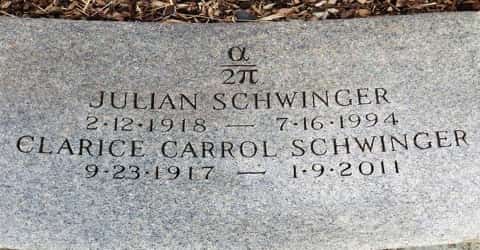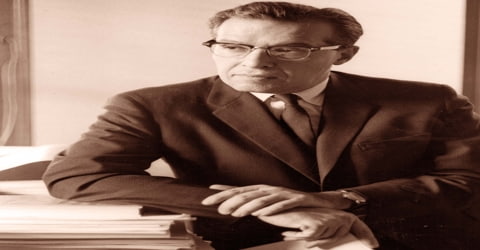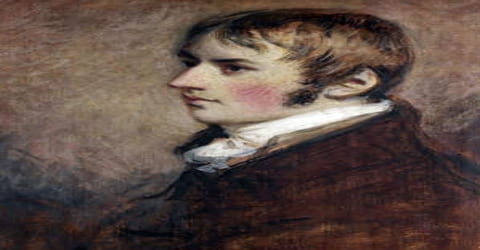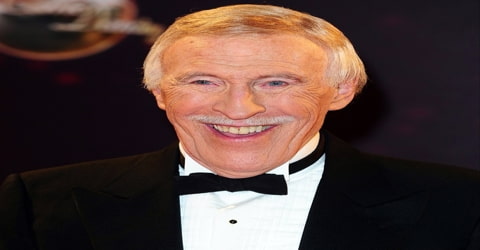Biography of Julian Schwinger
Julian Schwinger – American theoretical physicist.
Name: Julian Seymour Schwinger
Date of Birth: February 12, 1918
Place of Birth: New York City, New York, United States
Date of Death: July 16, 1994 (aged 76)
Place of Death: Los Angeles, California, United States
Occupation: Physicists
Father: Benjamin Schwinger
Mother: Belle (née Rosenfeld) Schwinger
Spouse/Ex: Clarice Carrol (m. 1947)
Early Life

An American physicist and joint winner, with Richard P. Feynman and Tomonaga Shin’ichirō, of the Nobel Prize for Physics in 1965 for introducing new ideas and methods into quantum electrodynamics, Julian Schwinger was born on February 12, 1918, in New York City, New York, U.S. to Jewish parents originally from Poland, Belle (née Rosenfeld) and Benjamin Schwinger, a garment manufacturer, who had migrated to America. Julian Schwinger is best known for his work on the theory of quantum electrodynamics (QED), in particular for developing a relativistically invariant perturbation theory, and for renormalizing QED to one loop order. Schwinger was a physics professor at several universities.
Schwinger’s fascination for physics grew while going through Encyclopedia Britannica at a very young age. Very soon he began to visit public libraries and read outside books on that subject. By the age of sixteen, he had published his first paper on physics. However, his penchant for higher knowledge almost ruined his college education. It was Professor Isidor Isaac Rabi of Columbia University, who first recognized his talent and took him under his wings. Under his guidance, Schwinger not only earned his B.S. degree but also his Ph.D. Very soon, he established himself as a brilliant theorist. However, he was fiercely independent and did not accept interference in his work. That is why he mostly worked at night. Although he dealt in diverse branches of physics, his works on quantum electrodynamics are especially noted. However, many believe that his students were his most enduring achievements. He left more than seventy students, through whom he continued to influence modern physics long after his death.
Schwinger is recognized as one of the greatest physicists of the twentieth century, responsible for much of modern quantum field theory, including a variational approach, and the equations of motion for quantum fields. He developed the first electroweak model and the first example of confinement in 1+1 dimensions. He is responsible for the theory of multiple neutrinos, Schwinger terms, and the theory of the spin 3/2 field.
Childhood, Family and Educational Life

Julian Schwinger, in full Julian Seymour Schwinger (/ˈʃwɪŋər/), was born on February 12, 1918, in New York City in a well to do Jewish family. His father, Benjamin Schwinger, was a successful clothing manufacturer. His mother’s name was Belle (née Rosenfeld), Schwinger. Julian had an elder brother named Harold. Both the children were enrolled at Townsend Harris High School for their secondary education. Born a child progeny, Julian became interested in physics at an early age.
Schwinger attended the Townsend Harris High School and then the City College of New York as an undergraduate before transferring to Columbia University, where he received his B.A. in 1936 and his Ph.D. (overseen by Isidor Isaac Rabi) in 1939 at the age of 21. He worked at the University of California, Berkeley (under J. Robert Oppenheimer), and was later appointed to a position at Purdue University.
Julian Schwinger published his first paper in physics in 1934 at the age of sixteen and by the age of seventeen, he was doing advanced calculations. Yet, because he did not attend classes and were more interested in solving higher problems, he began to have difficulties with his instructors and started failing in examinations. Fortunately for him, one of his letters published in the ‘Letters to the Editor’ section in ‘Physical Review’ caught the attention of Professor Isidor Isaac Rabi of Columbia University. He was more impressed when he met young Julian face to face.
Personal Life
Julian Seymour Schwinger married Clarice Carrol in 1947 while he was teaching at the Harvard University. The couple did not have any children.
Towards the end of his life, Schwinger was afflicted with pancreatic cancer. In spite of that, he worked intensely almost till the last. His last paper (on sonoluminescence) was published in the very year of his death.
Career and Works

Julian Seymour Schwinger earned a bachelor’s degree (1937) and a doctorate (1939) from Columbia University in New York City, before engaging in postdoctoral studies at the University of California at Berkeley with physicist J. Robert Oppenheimer. Schwinger left Berkeley in the summer of 1941 to accept an instructorship at Purdue University, West Lafayette, Ind.
At that time, an active program in semiconductor research was being carried out at Purdue for the Radiation Laboratory of the Massachusetts Institute of Technology. Schwinger joined the program in 1942 and worked on the propagation of microwave radiation in microwave cavities.
When in early 1943 the Los Alamos Scientific Laboratory was organized to build an atomic bomb, Oppenheimer invited Schwinger to join the laboratory, but he declined. However, because many of the leading theorists at the Rad Lab were leaving it to go to Los Alamos, Schwinger was asked to come to MIT. This he did in the fall of 1943. In his work there, Schwinger solved a wide variety of microwave problems. Using an integral equation formulation of field problems, he introduced and deployed powerful mathematical techniques that became characteristic features of many of his subsequent inquiries: Green’s functions and variational methods. These researches resulted in a rigorous and general theory of microwave structures in which conventional low-frequency electrical theory appeared as a special case. While at the Rad Lab, Schwinger gave lectures on the theory of waveguides that were attended by a small group of colleagues.
While working at Radiation Laboratory, Schwinger also solved a wide variety of microwave problems. The results of these works were later used by him to formulate many of his famous theories. At the same time, he gave a number of lectures on waveguides. These were attended by a selected group of colleagues. His lectures during this period exhibited his astounding analytical power as well as his depth of knowledge in varied branches of science. However, the war ended before, he could finish the series. Much later in 1968, these lectures were compiled in a book called ‘Discontinuities in Waveguides’.
In the fall of 1945, Schwinger accepted an appointment at Harvard University and in 1947 became one of the youngest full professors in the school’s history. From 1972 until his death, Schwinger was a professor in the physics department at the University of California at Los Angeles. Schwinger was one of the participants at the meeting held in June 1947 on Shelter Island, Long Island, N.Y., at which reliable experimental data were presented that contradicted the predictions of the English theoretical physicist P.A.M. Dirac’s relativistic quantum theory of the electron. During his tenure at Harvard, Schwinger worked on various aspects of modern theoretical physics and until the mid-1950s, was considered an authority on that subject. In 1948-1949, he submitted a series of papers titled ‘Quantum Electrodynamics’ (Parts I, II, and III) to ‘Physics Review’, which earned him great acclaim.
In 1951, in eight pages of the Proceedings of the National Academy of Sciences, Julian Schwinger gave a concise presentation of his formulation of the equations for the Green’s functions of quantum fields based on this novel approach to field quantization. Schwinger there introduced the use of “sources” classical sources for Bosonic fields and Grassman anticommuting sources for Fermionic fields as functional variables. Schwinger’s formulation was the functional differential equation version that in its integral form is called functional integration. The power of the approach stems from the fact that the symmetry properties of the Green’s functions can readily be exhibited, and approximation schemes can be devised that preserve these symmetry properties. Dating from the same period is his publication of the Schwinger action principle and, with Paul Martin, the use of temperature-dependent many-particle Green’s functions for addressing equilibrium and nonequilibrium problems in condensed matter physics. These contributions by Schwinger were widely appreciated and recognized. He was awarded the National Medal of Science in 1964. In 1951 he had already shared the first Albert Einstein Prize with Kurt Gödel.
From the middle of the 1950s, some of his theories began to be challenged. Nonetheless, he continued exploring new paths and from 1966, Schwinger began to develop his ‘source theory’, which was a reformulation of quantum electrodynamics theory. However, the theory was not accepted by many colleagues at Harvard.
Schwinger made a quantum electrodynamical calculation that made use of the notions of mass and charge renormalization, which brought agreement between theory and experimental data. This was a crucial breakthrough that initiated a new era in quantum field theory. Richard Feynman and Tomonaga Shin’ichirō independently had carried out similar calculations, and in 1965 the three of them shared the Nobel Prize. Their work created a new and very successful quantum mechanical description of the interaction between electrically charged entities and the electromagnetic field that conformed with the principles of Albert Einstein’s special theory of relativity.
In 1972, Schwinger left Harvard to join University of California, Los Angeles. There he continued with his work on source theory, which according to him was the mathematical symbolism of human manipulations in high-energy physics. Starting in the 1980s, Schwinger began a series of papers on the Thomas-Fermi model of atoms.

After 1989 Schwinger took a keen interest in the non-mainstream research of cold fusion. He wrote eight theory papers about it. He resigned from the American Physical Society after their refusal to publish his papers. He felt that cold fusion research was being suppressed and academic freedom violated. He wrote: “The pressure for conformity is enormous. I have experienced it in editors’ rejection of submitted papers, based on venomous criticism of anonymous referees. The replacement of impartial reviewing by censorship will be the death of science.”
All through his working life, Schwinger had published around 200 papers and had penned a number of books. He also acted as academic advisor to around 73 doctoral students and 20 post-doctoral students. Many of them had later become well-known physicists and three of them had won Nobel Prize. Through them, his theories continue to influence modern physics.
Awards and Honor
Julian Seymour Schwinger was jointly awarded the Nobel Prize in Physics in 1965 for his work on quantum electrodynamics (QED), along with Richard Feynman and Shin’ichirō Tomonaga.
Schwinger also received the Nature of Light Award of the U.S. National Academy of Sciences in 1949, Albert Einstein Award in 1951 and the U.S. National Medal of Science in 1964.
Schwinger also received honorary D.Sc. degrees from Purdue University in 1961 and from Harvard University in 1962.
Death and Legacy

Julian Seymour Schwinger died of pancreatic cancer. He is buried at Mount Auburn Cemetery; is engraved above his name on his tombstone. These symbols refer to his calculation of the correction (“anomalous”) to the magnetic moment of the electron.
Julian Schwinger is best known for his work on quantum electrodynamics (QED). He not only developed the formalism of the new QED in several fundamental papers but had also made them more useful for practical calculations. His findings helped to bring about a new dimension to the quantum field theory. Schwinger wrote his Ph.D. dissertation while he was still an undergraduate student. His career spanned for sixty years and during this period he had guided at least four generations of graduate students. According to Professor Saxon, the faculties of America’s best universities are filled by Schwinger’s students and their students.
Schwinger’s work extended to almost every frontier of modern theoretical physics. He had a profound influence on physics both directly and through being the academic adviser for more than 70 doctoral students and more than 20 postdoctoral fellows, many of whom became the outstanding theorists of their generation.
Information Source:
















